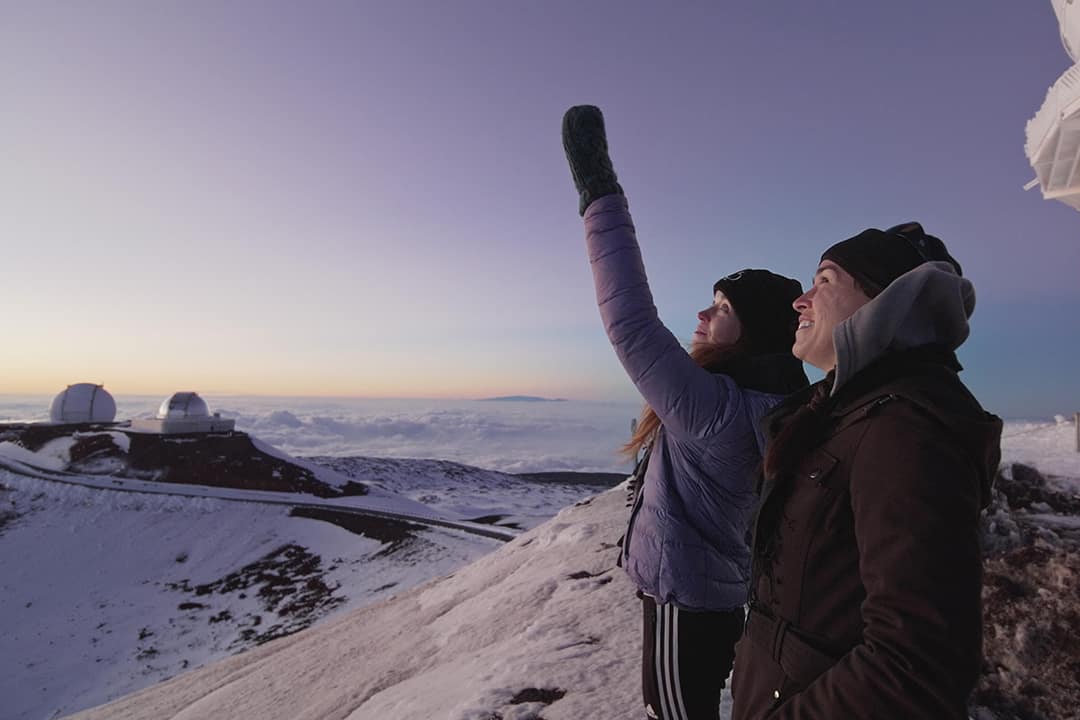Astronomer Laurie Rousseau-Nepton begins every episode of North Star — the National Film Board’s 2023 mini docuseries on her career and philosophies — with the simple phrase: “It is important to know that we are a part of the universe, and that the universe is also a part of us.”
But just how much are our lives and the universe interconnected?
Rousseau-Nepton looks to Innu knowledge to answer these questions. Rich knowledge about astronomy and physics persists in Innu oral tradition from generations before her, but she says the information is slowly fizzling out of Innu knowledge as the oral tradition begins to disappear. “Without the cycle of ancestors, of stars, of generations of stars, we wouldn’t be here today,” she says in an interview with Canadian Geographic.
“Innu” means “people” in the Innu language. The homeland of the Innu is Nitassinan, a vast boreal region around Eastern Quebec and Labrador.
In the series, Rousseau-Nepton reflects that hunting trips with her father by the Ashuapmushuan River in Québec shaped her into the curious scientist she is now. Since the first hare trap she laid before she was even two years old, she has been studying interactions between the trees, animal tracks, animal behaviour, and the weather.
Rousseau-Nepton says she’s able to see little details in the environment’s intricate patterns — including, of course, the details in the ever-changing night sky. “When I was little, I really loved watching for shooting stars and the northern lights,” she remembers.
She talks about how Innu oral history includes intimate knowledge of weather and stellar patterns so that the Innu may use this knowledge to become more efficient hunters. The North Star — connected to Ursa Major and Ursa Minor constellations — seems to stand still in a constantly moving night sky, and has been a navigational tool for the Innu for centuries.
The Innu, she explains in the series, follow a lunar cycle that is not only helpful as a calendar but also as a guide for understanding animal behaviour. Moose, for example, will likely be out travelling while the moon is bright and will move most on a cloudless night with a full moon. They “hunker down” and don’t move as much during a night without a bright moon. Tracking the moon’s cycle thus helps hunters understand when moose are likely to remain in an area for longer periods.
The stars hold special spiritual meaning in Innu culture as well: according to Innu philosophy, she said in an interview with Canadian Geographic, “We come from the stars and we return to the stars.”
“Through that philosophy, you’re never dead,” she reflected in the interview.
Before becoming an assistant professor at U of T’s Dunlap Institute for Astronomy and Astrophysics, Rousseau-Nepton worked on a project using a spectrometer that she had helped to create – SITELLE, which is an Imaging Fourier Transform Spectrometer (IFTS). A spectrometer is a tool that splits light collected by telescopes into specific colours that can tell the astronomer which periodic elements they’re viewing. The elements present can shape an understanding of how young and active a galaxy is.
The telescope that houses SITELLE is housed in one of many observatories on Mauna Kea, an inactive volcano in Hawai’i. Surrounded by nothing but ocean, with a lack of light pollution to interfere with the light pouring into each telescope, and minimal wind turbulence to interfere with imaging, Mauna Kea is the ideal location for studying astronomy. But this volcano’s status as a hotspot for observatories has been contested because it is a sacred location for Native Hawaiians.
The dormant volcano stretches out in rounded red and grey peaks above volcanic clouds. Like chess pieces along the rounded natural board, giant white observatories, each housing a telescope, sit on the top of the volcano.
The scale of the data that SITELLE collects is unthinkable: tens of thousands of star formations are documented in a database called “Signals.” Rousseau-Nepton finds that expanse beautiful and fascinating. In understanding these star formations through the Signals database, she hopes to understand the mechanisms of the birth of stars, and perhaps understand more of the history of how we came to be.
In the series, Rousseau-Nepton discussed whether her detailed understanding of the stars ever made a night sky less beautiful. “If you removed all this knowledge from my life and from my brain, I don’t think I’d feel as complete,” she says. The integration of Innu history, she explains, completes her understanding of the universe.



No comments to display.